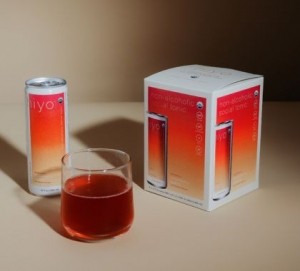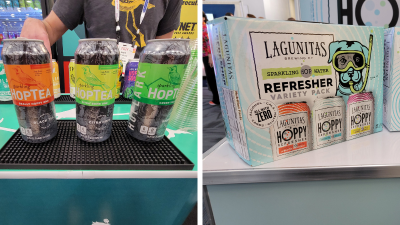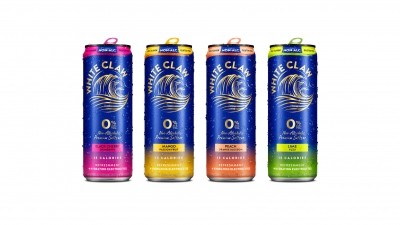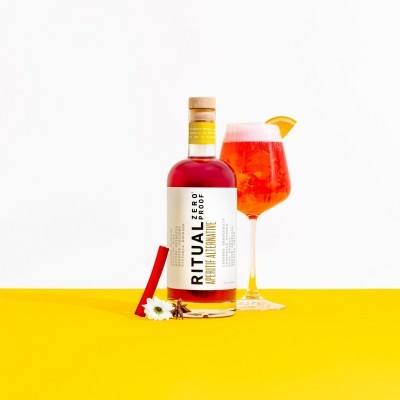What’s stirring this Dry January? Canned mocktails, extra hoppy beverages, functional drinks
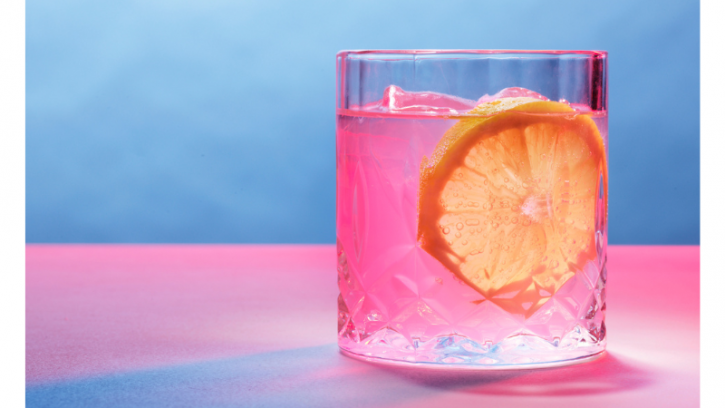
Over the last several years, Dry January has become an occasion where consumers reduce or eliminate their alcohol consumption through the trial of non-alcoholic alternatives to beers, cocktails, and spirits, which has created a growing market for these products.
In 2022, the no- and low-alcohol beer, cider, wine, spirits, and ready-to-drink (RTD) products market surpassed $13bn, up from $8bn in 2018 for the 10 key markets (United States, Australia, Brazil, Canada, France, Germany, Japan, South Africa, Spain, and the United Kingdom), according to IWSR's December 2023 report. The no- and low-alcohol category is also expected to grow at a 6% CAGR between 2023-2027, with non-alcohol at an accelerated 7% CAGR for the same time to reach 4% of the total alcohol market.
“As no- and low-alcohol becomes a more established part of the beverage alcohol landscape, growth is slowing after a peak in 2020 to 2021 – but the category is poised for robust gains in the coming years, spearheaded by no-alcohol and persistently strong recruitment levels,” Susie Goldspink, head of no- and low-alcohol at IWSR Drinks Market Analysis, shared in a press release.
Despite the growth in non-alcoholic beverages, alcohol consumption in the US also is up. In 2021, an average American consumed 2.51 gallons of ethanol from alcoholic beverages, including wine, beer, and spirits, which was a 2.9% increase from 2.44 gallons in 2020, according to the National Institute on Alcohol Abuse and Alcoholism.
However, young consumers are embracing sober or sober-curious lifestyles, while lingering trends from the COVID pandemic have sustained the growth in non-alcoholic alternatives.
Of the more than 1,000 consumers surveyed by Gallup, 62% of those between the ages of 18 and 34 said they drank alcohol, down from a high of 72% from the 2001-2003 reporting year. However, consumers aged 55 and older are drinking more, with 59% saying they drank alcoholic beverages during the 2021-2023 reporting years, up from 49% in 2001-2003.
Mocktails in a can embrace sophistication, convenience
During the COVID-19 pandemic, consumers became more acquainted with non-alcohol alternatives of alcoholic beverages, as they experimented with mixing drinks at home, Stacey Swenson, cocktail consultant at Longbottom and mixologist, told FoodNavigator-USA. As a result, restaurants and bars have expanded their non-alcoholic options, she added.
Using her experience as a bartender and bar director, Swenson helped the non-alcoholic beverage brand Longbottom create its non-alcoholic bloody Mary called Virgin Mary, which is GMO-free, gluten-free, and bottled in recycled cans.
“People who drink [other brands of non-alcoholic bloody Marys] usually are just having one because they're so heavy and usually just not very enjoyable, whereas Longbottom is made from fresh-pressed tomato. So, it's fresh tomato juice and other natural ingredients. It's so much different than any other quote mix that's out there because it can still be drunk on its own over ice or shaken, which I can't say that about any other bloody Mary mix.”
As brands look for opportunities in the non-alc space, they should consider how they can create products with quality ingredients that can stand on their own without alcohol, Cooper said.
“I do not see [non-alc] as a trend. I think this is now just the norm. You can get these RTDs ... [with] really delicious things that you can add alcohol to if you want to, but you don't necessarily need to that have just as much thought and creativity and also with really good ingredients, which is something that you never saw before.”
HOP WTR sees ‘banner year’ in 2023, doubles up on the hops
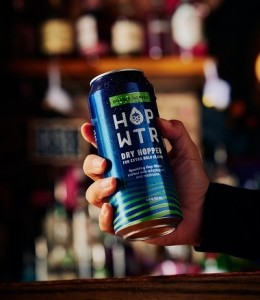
Outside of cocktails, hop waters have gained popularity among the non-alcoholic market as an alternative to hop-heavy beers like Indian Pale Ales and Pale Ales.
Ahead of Dry January, HOP WTR doubled up on hops with the release of its Double Hopped beverage, which also contains ashwagandha and l-theanine for added functionality like the rest of its products. The idea for the new product came after hearing that its customers wanted a product that had even more hops, brand co-founder and CEO Jordan Bass told FoodNavigator-USA.
“We're constantly surveying [customers] and talking to them and getting data and feedback, and one of the things that came out of that was our hophead consumers saying, ‘Hey, we want something even hoppier. We love your product, but we want something that's palate wrecking,” Bass said. “So, we listened to them, and we launched the Double Hop to support that need, and the feedback has been incredibly positive, and we've sold out [of our initial run].”
In addition to having a new flavor for this Dry January, HOP WTR uses unique marketing tactics to engage consumers during the month, Bass said. Last year for its Dry January promotion, HOP WTR sent fans a HOP LOCKR, a safe for which only the brand had the combination where consumers could lock up their alcohol for the month of January.
This year, HOP WTR partnered with a certified hypnotist to “put consumers into a trance that will help them form healthier habits,” HOP WTR shared in a press release. Consumers could sign up to receive a session with the hypnotist by Jan. 12, and winners will receive the session by Jan. 17.
Last year’s Dry January also set HOP WTR up for “another transformative year” in 2023, with the brand “up almost 400% year-over-year in retail scans,” he noted. This Dry January will “be similar, if not greater” to last year’s, as the awareness around non-alcoholic beverages continues to grow, he added.
“We see every year that dry January is a tentpole moment for us, where it really brings so many new consumers into the franchise to trial the product,” Bass said. “What we've been very pleasantly surprised with is that each year when we see that, it sets like a new baseline for the brand to grow from, it's not like you see dry January, and all of a sudden it dips back down to previous levels, you set a new high and then grow from there.”
Hiyo creates ‘better-than-alcohol alternatives’ with the help of functional ingredients
Like HOP WTR, non-alcoholic seltzer brand hiyo is leaning into functionality and providing consumers with a healthier alternative to traditional alcohol using ashwagandha, l- theanine, lion's mane mushroom, and ginger, brand co-founder Cygne Cooper told FoodNavigator-USA.
“In order to make this better-than-alcohol alternative, we rely heavily on our functional ingredients to provide the health benefits and effects for our consumer. We also always say that, much like any substance, those ingredients can affect people differently. Most are clinically shown to… reduce stress and anxiety, improve moods, [and provide] better sleep,” she said.
Initially, the Dry January that consumers are familiar with today had its roots in the UK and overseas, with organizations like Alcohol Change promoting alcohol abstention to promote healthy living, she noted.
Recently, The World Health Organization (WHO) issued a statement in The Lancet Public Health journal stating that “when it comes to alcohol consumption, there is no safe amount that does not affect health,” and its cancer research arm the International Agency for Research on Cancer (IARC) previously listed alcohol as a Group 1 carcinogen, the highest risk group.
"Dry January for us, it's a huge holiday. It's like the one time a year where the global consciousness is trying to think about intention setting, how to be healthier, [and] what they want to change, and we've seen over the past few years that for a lot of people drinking alcohol is a core factor that they want to improve upon or cutting back."
While UK and Australian markets are ahead of the US in Dry January, Cooper expects "increased awareness and excitement" around non-alcoholic beverages in the US, as the market is "really trying to make it a mainstay in the States.” Hiyo also kicked off the month with a new flavor, Strawberry Guava, which joined its line that includes Peach Mango, Watermelon Lime, and Blackberry Lemon.
“We've seen people catch on every year, and we've seen growth in our business every year, every January. We've outdone our prior January, and so it's been it's been really promising to see that there [are] a lot of people out there that are starting to adopt, these campaigns and starting to really, put that healthy foot forward in a way that doesn't sacrifice their social life.”
